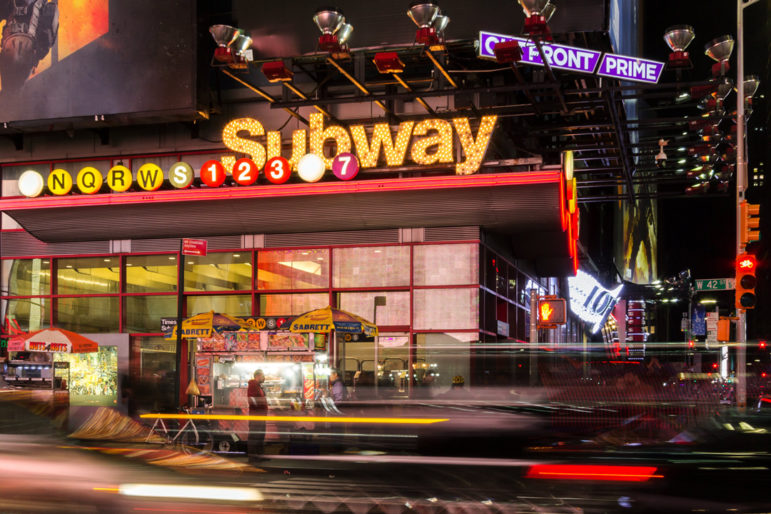‘Many vulnerable individuals experiencing homelessness or in need of other services are shuttled into the criminal justice system in a cruel and costly revolving door, often leaving them rightfully distrustful of social services providers.‘

Matthew Penrod/NYC & Company
Signs of normalcy are continuing to emerge. From the restoration of 24-hour subway service to the easing of most pandemic-related restrictions, the timing couldn’t be better as we gear up for a busy and better summer. Despite the welcome news, there are still many visible reminders of the pandemic’s scars on our city’s streets and sidewalks, including a growing homeless population and individuals with serious mental health or substance abuse issues.
In Times Square, which has seen a significant uptick in foot traffic in recent weeks along with a recent wave of unfortunate incidents, we decided to try something different to navigate and address these issues: a new community-led initiative to respond to peoples’ needs in and around Times Square.
That initiative is Community First, where community navigators on the streets take the time to build relationships — and trust — with the unique goal of addressing problems incrementally and to address what is preventing people from accepting services, and then ultimately linking them to those services. In other words, we don’t force services upon vulnerable populations but rather warm them up to those services on their terms.
Even as more businesses open in Times Square, many of those who have found refuge in the neighborhood are still struggling — struggles that have worsened throughout the pandemic and which have disproportionately impacted communities of color.
Many vulnerable individuals experiencing homelessness or in need of other services are shuttled into the criminal justice system in a cruel and costly revolving door, often leaving them rightfully distrustful of social services providers. Community First aims to interrupt this cycle by looking at people in need “with a human eye,” as one participant said, and building trusting relationships, providing essentials while learning more about their individual needs. Depending on those needs, navigators can help community members more confidently access services from a wide array of community-based partners.
Although these are long-term projects, early results are promising. It may start with just a packet of apple sauce or a warm blanket, but these are two examples of recent interactions that eventually led to a critical need: shelter. It may take many repeated engagements before someone will agree to access services, but that is one of the goals—to be out there for the long-haul to see people get help when they are ready. We have reached over 130 individuals in the first three months of the pilot program, but we know the work isn’t done yet.
Moving forward, we hope the city will see the potential of this program and follow suit, including future funding to hire full-time Community Navigators and potentially expand to other neighborhoods around New York City.
Times Square has the brightest lights in the city — which also means a constant spotlight. When something goes wrong in the city, we look to Times Square as a symbol for the city as a whole. But when something works in Times Square, it can work everywhere.
New York cannot heal as a city without also helping its most vulnerable members. It’s a new opportunity to truly unite New York with one goal — getting everyone in need back on their feet through building genuine, community trust.
Lauren Curatolo is the director of Midtown Community Court. Tom Harris is president of the Times Square Alliance. Brenda Rosen is the president and CEO of Breaking Ground. Dr. Ashwin Vasan is the president and CEO of Fountain House.









2 thoughts on “Opinion: As Times Square Makes a Comeback, It’s Time to Help Those Still Struggling”
The issue here is not affordable housing..in most area saturated with the less fortunate ie(homeless)need building contractors…specified to meet the growing needs of those with in the communities efforts…its evident a homeless person…has no credit…job..income..so these new houses need to be subsidized…with labor..right…who better than the people who will live in them…Elon Musk whole house cost..55,000$…how there flagged as cube boxed…fyi…take Central Park…along the pier…meatpack alley..and convert…these cubeboxed houses..are easy to install..range in sizes…and the best part is…no mortgage…putting people power in action..enlist benefits for our homeless…not by need..rather by definition….One New Yorkers…eye on you…op…always looking up…L&i..
93559850